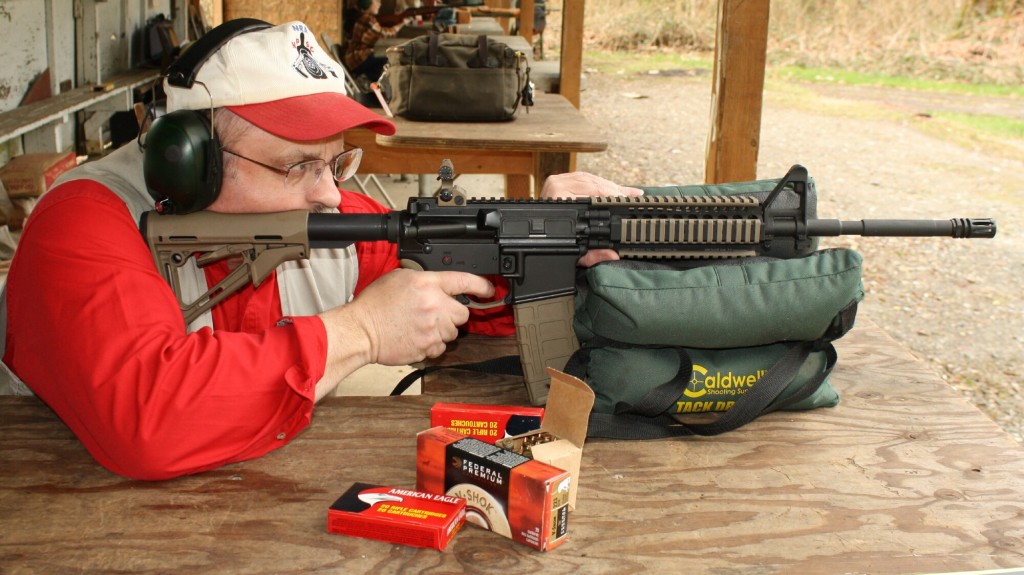
ANALYSIS | By Dave Workman | Editor-in-Chief
When a three-judge panel ruled 2-1 last week that California’s ban on so-called “large capacity magazines” is unconstitutional, did it also deliver a fatal blow to one of the gun prohibition lobby’s pet issues?
Anti-gun groups, working with sympathetic lawmakers in various states—especially along the West Coast—have been pushing to ban magazines carrying more than 10 cartridges. It’s one strategy to impair the rights of gun owners and perhaps even discourage many people from buying guns, and criminalize the possession of such magazines so their owners could be charged with a crime and ultimately stripped of their Second Amendment rights.
“California’s law imposes a substantial burden on (the) right to self-defense,” the 66-page ruling by Circuit Judge Kenneth K. Lee declares. “The ban makes it criminal for Californians to own magazines that come standard in Glocks, Berettas, and other handguns that are staples of self-defense. Its scope is so sweeping that half of all magazines in America are now unlawful to own in California. Even law-abiding citizens, regardless of their training and track record, must alter or turn over to the state any LCMs that they may have legally owned for years — or face up to a year in jail.
“The state of California,” Judge Lee continued, “has latitude in enacting laws to curb the scourge of gun violence, and has done so by imposing waiting periods and many other limitations. But the Second Amendment limits the state’s ability to second-guess a citizen’s choice of arms if it imposes a substantial burden on her right to self-defense. Many Californians may find solace in the security of a handgun equipped with an LCM: those who live in rural areas where the local sheriff may be miles away, law-abiding citizens trapped in high
“Case crime areas, communities that distrust or depend less on law enforcement, and many more who rely on their firearms to protect themselves and their families. California’s almost blanket ban on LCMs goes too far in substantially burdening the people’s right to self-defense. We affirm the district court’s summary judgment, and hold that California Penal Code section 32310’s ban on LCMs runs afoul of the Second Amendment.”

Washington and Oregon have active gun prohibition groups that have been pushing to ban large magazines for years. They have been unsuccessful so far, and the Ninth Circuit court ruling throws a significant roadblock in their way.
In the process, the court also applied strict scrutiny, setting the bar very high for anyone to wiggle around the ruling. It also reinforces the fact that the Second Amendment protects a right, rather than a government-regulated privilege.
Modern sporting rifles—deliberately misidentified as “semiautomatic assault rifles”—routinely are sold with full-capacity magazines. But as the court ruling noted, popular semi-auto handguns also frequently come with magazines that hold 12 or more rounds. Some handguns, depending upon caliber, may hold 15 or 17 rounds. Such firearms are also affected by this new ruling.
This could be important when legislatures meet in January, as there almost certainly will be new gun control proposals introduced. It will help gun rights activists to remind lawmakers in Salem and Olympia, for example, that any magazine limit proposals are dead-on-arrival because the federal court has ruled such restrictions run afoul of the U.S. Constitution.
Gun control is also going to be a key issue in the presidential and congressional elections this fall. Watch for this issue to be debated from now until Nov. 3, and perhaps beyond. Joe Biden and Kamala Harris are big proponents of “assault weapon” bans and neither likes large capacity magazines. The Ninth Circuit’s ruling could be a splash of cold water.
In his opinion, Judge Lee also cited the 2008 Heller ruling, in which the U.S. Supreme Court observed, “In addressing ‘unusualness,’ the Supreme Court held that ‘the Second Amendment extends, prima facie, to all instruments that constitute bearable arms, even those that were not in existence at the time of the founding.” In other words, just because a weapon was not in existence during the founding era does not mean it is ‘unusual.’”
Those are powerful words. The same logic can apply to the First Amendment because radio, television, the Internet, computers, web offset printing presses; none of those things existed when the Constitution was written. The fact that editorial writers have often hypocritically treated the Second Amendment differently than the first reveals an anti-gun philosophy that puts the press at odds with gun owners.
But rights are rights. They are special, and in many ways off the table when it comes to trying to prevent violent crime. There can be severe penalties for abusing rights and misusing firearms, and even their magazines, but the fundamental rights cannot be infringed nor impaired.
If the full Ninth Circuit upholds this ruling, or if the case goes to the Supreme Court for review and is allowed to stand or affirmed by the high court, anti-gunners will only then understand that the real problem with firearms in this country is their own social prejudice.



